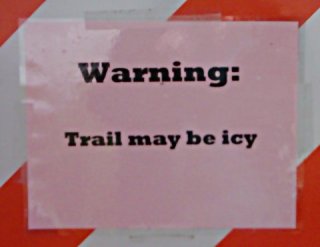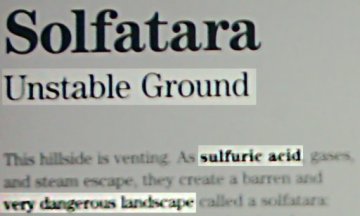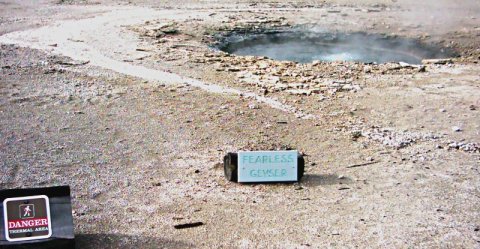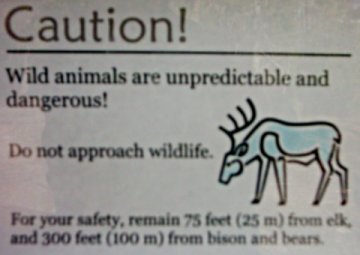I made a 90-second “pod”cast of why microbial fuel cells work. I don’t yet know if This Week in Science is or was interested in playing it. [Update: this was featured in the November 6, 2007 broadcast! Hooray!] Either way, once I find a way to make it available without killing my bandwidth I shall. I’ll probably do more of them – if nothing else I obviously need the practice.
It was oddly difficult getting myself to actually talk to the microphone – more so than actually publically speaking to real people. I’m not sure why. It strikes me as something I’ll get over quickly once I’ve done it a few times, and my voice won’t sound quite so bland in the future.
In any case, microbial fuel cells are possibly the topic that got me really interested in a college education in applied biotechnology. I’ve been meaning to do a post on why they work for a while, so here’s one, in somewhat more detail than the 90-second audio version.
First, some quick review: We all remember that atoms are made of positively-charged protons, uncharged neutrons, and negatively-charged electrons, right? Protons and usually neutrons in the middle, and electrons hovering around. When atoms chemically react with each other, they’re really just having a fight over who gets to keep the electrons. When the reaction is over, some kinds of atoms or groups of atoms will have gained at least partial custody of electrons that used to belong to some of the other atoms or groups of atoms. The ability of a kind of atom to take electrons away from other atoms is called “electronegativity”. The second most electronegative element in the universe just happens to be a major part of our atmosphere – Oxygen.
As bacteria break down food molecules to get biological energy, there are electrons left over along the way. The bacterial cells have specific carrier molecules that take these extra electrons away, where they can be later dumped elsewhere into any of a variety of other useful biological reactions that need them. The one we’re concerned with today is called the Electron Transport Chain.
In many bacteria, and in the mitochondria of plants, fungi, and animals, the Electron Transport Chain regenerates a huge amount of a cell’s biochemical energy. The extra electrons get sucked into the beginning of this chemical chain, and as they are pulled along, the force of this pull drives a process which regenerates the cells’ main energy-carrying molecule, called ATP. This process is “respiration”, and it’s also exactly the reason you need to breathe oxygen. Humans need so much energy just to remain alive that we couldn’t survive without the huge amount of extra energy that respiration provides.
What drives this whole chain is some chemical at the other end pulling the electrons out. In aerobic organisms, this is oxygen. Some bacteria can use other chemicals, like nitrates, sulfates, and ferric iron (yes, there are bacteria that can breathe rust…) None of these chemicals provide quite as much energy as oxygen does, but it’s better than nothing and gives bacteria that could be damaged by oxygen something to breathe.
Normally, this last step happens inside the cell, but some bacteria have ways of extending this last step so that the final hand-off of the electrons happens outside itself. Some bacteria even make electrically-conducting biological “nano-wires” that this can happen through. Others make “shuttle” molecules that can pick up electrons, dissolve out of the cell, hand off the electrons somewhere outside, and then dissolve back into the cell to pick up more.
Now, we can make a microbial fuel cell. An electrode is put where the bacteria are growing – without oxygen – and a wire runs from this, out of the area where the bacteria are and to another electrode which is exposed to oxygen. It’s like an electric snorkel for bacteria. From the electrode and through the wire, the oxygen sucks electrons away from the bacteria. An electrical device stuck between the ends of the wire can use this energy exactly the same way that it could use the energy from electrons being sucked from one end of a battery to another.
Interestingly, the common “simple stain” Methylene Blue can also act as an artificial “shuttle” molecule. When reduced (carrying extra electrons) methylene blue is actually colorless, and I would swear I’ve seen protocols somewhere that use this to measure just how active a yeast culture is, and one of the demonstration microbial fuel cell setups actually uses a culture of yeast in methylene blue rather than a microbe that can naturally breath through electrodes.
By the way, if you thought you could tell a human from a realistic humanoid robot bent on world domination by the fact that only humans eat, I’ve got bad news for you. One interesting application of microbial fuel cells is Gastrobots. Literally, robots with digestive systems, where bacteria breaking down the contents of the “stomach” act as a microbial fuel cell to power the robot.
I hope you find this explanation useful and interesting. If you have (or even if you haven’t) please let me know. I can’t necessarily tell if I’m doing anybody any good without feedback!
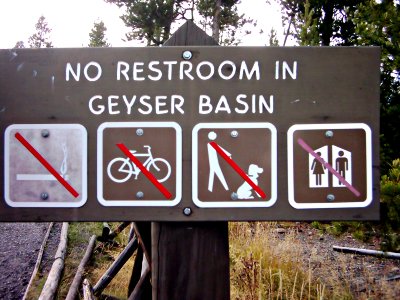
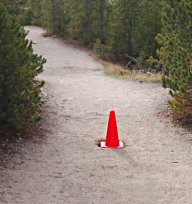 Wow! Look at that! Do I spy the
Wow! Look at that! Do I spy the 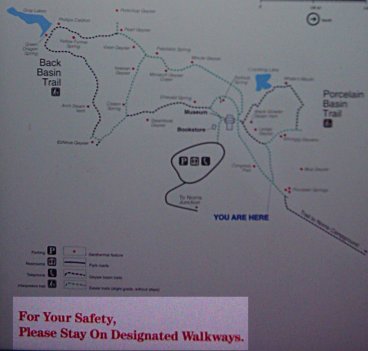


 Yeah, yeah, whatever. What are you going to do if I don’t – have me arrested?
Yeah, yeah, whatever. What are you going to do if I don’t – have me arrested?

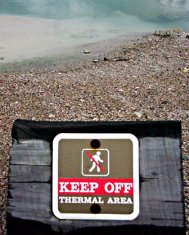
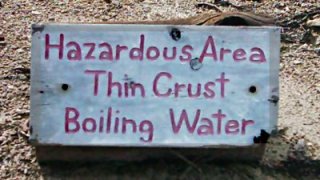

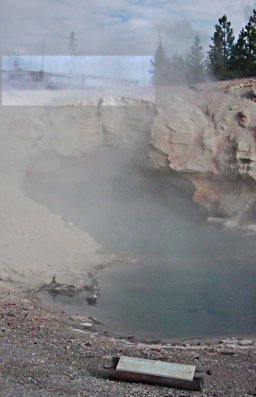 What the heck? Is Green Dragon Spring actually devouring the ground under that walkway?!?! Oh! I get it – you’re saying the park itself can swallow you up and and cook you?
What the heck? Is Green Dragon Spring actually devouring the ground under that walkway?!?! Oh! I get it – you’re saying the park itself can swallow you up and and cook you?